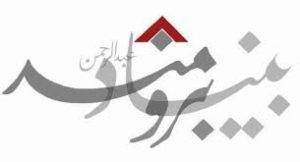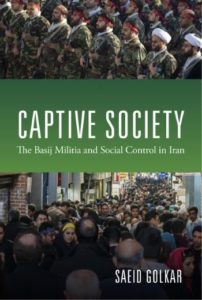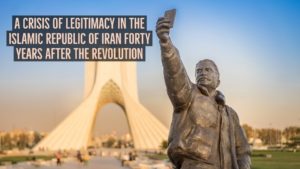Iran carried out the first known execution of a prisoner arrested during months-long protests on Thursday morning, a major escalation that sent shock waves throughout the country and that rights groups warned could signal an even bloodier phase in the violent crackdown on the nationwide uprising, The Post reports.
“This brutal action is meant to shake the foundation of a movement that desires freedom over tyranny,” said the International Republican Institute. “Such evil will only strengthen the resolve of the very people the regime is trying to intimidate.”
 The Islamic regime is waiting to gauge the international response, said Stanford University’s Abbas Milani. “If they get away with it, they will begin a bloodbath to reestablish a reign of terror. International community must serve clear credible notice that there are consequences,” he tweeted.
The Islamic regime is waiting to gauge the international response, said Stanford University’s Abbas Milani. “If they get away with it, they will begin a bloodbath to reestablish a reign of terror. International community must serve clear credible notice that there are consequences,” he tweeted.
Solidarity throughout Iran is building and uniting a population once wholly subservient to the ruling Islamic theocracy, led by Supreme Leader Ali Khamenei, whose rulings are enforced by the Intelligence and Public Security Police (PAVA), the Guidance Patrol, aka morality police, and the Islamic Revolutionary Guard Corps, reports suggest.
 Activists were sceptical of recent reports that the Guidance Patrol (Gasht-e Ershad) would be closed down. Scrapping the units would be “probably too little too late” for the protesters who now demand outright regime change, said Roya Boroumand, co-founder of the Abdorrahman Boroumand Center rights group, a partner of the National Endowment for Democracy (NED).
Activists were sceptical of recent reports that the Guidance Patrol (Gasht-e Ershad) would be closed down. Scrapping the units would be “probably too little too late” for the protesters who now demand outright regime change, said Roya Boroumand, co-founder of the Abdorrahman Boroumand Center rights group, a partner of the National Endowment for Democracy (NED).
“Unless they remove all legal restrictions on women’s dress and the laws controlling citizens’ private lives, this is just a PR move,” she told AFP.
 What is currently taking place is a movement that has brought together many people from the different strata of society, from the Iranian lower to middle classes and upper classes, spreading widely throughout the country, adds the University of Tennessee’s Saeid Golkar, the author of Captive Society: The Basij Militia and Social Control in Iran. Unlike previous protest, the goal of the 2022 revolution is not for economic relief or reform of the system. It is, first and foremost, aimed at abolishing the Islamic Republic as a regime, he tells Carnegie’s Michael Young.
What is currently taking place is a movement that has brought together many people from the different strata of society, from the Iranian lower to middle classes and upper classes, spreading widely throughout the country, adds the University of Tennessee’s Saeid Golkar, the author of Captive Society: The Basij Militia and Social Control in Iran. Unlike previous protest, the goal of the 2022 revolution is not for economic relief or reform of the system. It is, first and foremost, aimed at abolishing the Islamic Republic as a regime, he tells Carnegie’s Michael Young.
For the current revolution to succeed, the ruling elite needs to make a political decision to surrender power, which is feasible only if dissent within its own rank and across all factions grows to such a level that the ruling elite accepts there is no feasible path to maintaining power, notes analyst Shay Khatiri. In 1979, the ruling Pahlavis left Iran because they didn’t want a bloodbath in the streets, and the military surrendered.
However, a similar scenario today is highly unlikely given the factionalized structure of the regime makes collective action practically impossible, while ideological and material incentives to remain loyal to the regime remain strong for many in the armed forces, he writes in Revolution Returns to Iran, an essay for American Purpose:
The Islamic Republic has proven that it has no interest in giving up power. Revolution is a contest of wills over the political future of a country; in this instance, one side has a brutal police state and surveillance technology on its side. It will end when one side’s will triumphs over the other’s. The people have demonstrated their resolve to stay the course as well. Since 2017, Iranians have bled and died in battles against the security forces and come back again more forcefully—and more grieved and outraged.
 Hacked files from regime propaganda outlet Fars News confirm that more protesters have died recently than in 2019, yet the protests have persisted, Khatiri adds. If neither side backs down, a civil war could emerge.
Hacked files from regime propaganda outlet Fars News confirm that more protesters have died recently than in 2019, yet the protests have persisted, Khatiri adds. If neither side backs down, a civil war could emerge.
However, even if the regime survives, Iran has changed dramatically, both for the regime and its people. The Islamic Republic has lost confidence and people have become angrier and less scared, adds Golkar, a nonresident senior fellow at the Tony Blair Institute for Global Change. One wise man said that when you hit two eggs together, one cracks. But we don’t know which one will crack. I hope the regime is overthrown. We shouldn’t forget that a revolution is a marathon, not a sprint.
Iranian civil society has been fighting extreme repression, international isolation, and increasing poverty for decades. How can international actors such as the EU work more closely with civic activists to bring about long-term change? Carnegie Europe asks (above). Ambassador Stella Ronner-Grubačić joins a panel discussion, featuring civil society and human rights activists Mona Mir Sattari, Tara Sepehri Far, and Sussan Tahmasebi.
Iran strike: police call shopowners “traitors” and seize their stores#IranRevolution https://t.co/Ox7FeQu11q
— ERSHAD ALIJANI (@ErshadAlijani) December 8, 2022







